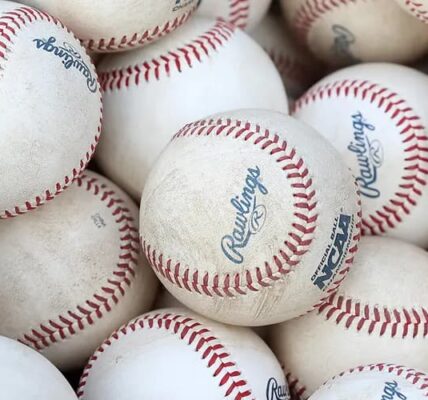In the realm of baseball, the term “Mound Visits Remaining” (MVR) might ring a bell but often lacks a comprehensive understanding. This article delves into what MVR signifies and its significance in baseball. It also scrutinizes how the implementation of the five-visit rule has altered the dynamics of the sport. This exploration provides insights for avid followers and occasional watchers alike, shedding light on a distinctive element of baseball’s history.
What is MVR?
What exactly is MVR? In baseball parlance, MVR refers to the count of mound visits a team is allowed during a game, a number closely monitored by umpires due to the established cap for each team. The strategic implications of mound visits are profound, as they can be used to soothe a pitcher under pressure or to discuss tactics with the defensive team.
- The core aim of the five-visit limit is to prevent teams from intentionally slowing the game’s tempo. This rule strives to enhance the appeal of the sport by quickening the pace, thereby drawing in more spectators. Mound visits encompass any situation where play is halted for a player or coach to confer with the pitcher at the mound. However, certain scenarios, like those following offensive changes or when a coach makes two visits in an inning (player-initiated visits excepted), are not counted;
- It plays a pivotal role in the rhythm of a baseball match. They are crucial for relieving pitchers’ stress in high-stakes situations and offer a chance for the coach to plan with the defense team.
Delving into the realm of baseball terminology, “MVR” is just one of many abbreviations that enrich the sport’s language, similar to the way we previously explored the meaning of “RBI” in baseball.
Various Purposes and Dynamics of Mound Visits in Baseball
A mound visit in baseball is a multifaceted tactical intervention often initiated by a coach, though players, particularly catchers, can also call for it. This on-field meeting serves several purposes.
- Primarily, it’s a tool for coaches to help their pitchers regain composure, especially when they struggle to pitch accurately. It’s a moment for reassurance, strategy adjustment, or a mental reset;
- Additionally, it is strategic in managing game tempo. For instance, when a pitching change is imminent, a mound visit can provide the incoming pitcher with precious extra minutes to warm up. This is crucial in high-pressure situations where a fresh pitcher needs to be at their best immediately.
Beyond focusing on the pitcher, mound visits are opportunities for coaches to regroup the entire defense. During these brief huddles, strategies are discussed, and fielders are instructed on how to handle the upcoming plays. This aspect of mound visits underscores their importance in the broader team strategy, beyond just the pitcher-catcher dynamic.
Rationale Behind Baseball’s Mound Visit Rule

Mound Visit Rule (MVR) in baseball was designed to speed up the game’s rhythm. In the past, the sport often faced criticism for its prolonged and at times unstimulating nature, with mound visits being a significant factor in this protracted pace. One common strategy during mound visits was to intentionally slow down the gameplay. With the new rule, teams are allowed a maximum of five mound visits per game, with additional visits granted in extra innings. A rule stipulates that a pitcher can receive only one mound visit per inning, and a second visit in the same inning necessitates the pitcher’s replacement. The overarching goal of this rule is to ensure a quicker and more engaging game.
The Five Mound Visits Policy
The essence of this rule is to deter teams from purposefully disrupting the game’s rhythm. Baseball’s charm lies in its quick and uninterrupted flow, and any delay can lead to viewer disinterest. The sport has historically struggled with a slow pace, resulting in a drop in viewership as fans gravitate towards more rapid and action-packed sports. Before the implementation of this rule, mound visits, particularly those involving a pitching change, could take upwards of five minutes. This cap on mound visits has played a crucial role in enhancing baseball’s attractiveness by promoting a more brisk pace of play.
Limiting Mound Visits to Sustain Consistent Play
The restrictions on mound consultations are part of a wider strategy to maintain a consistent flow in baseball games, similar to other measures such as the pitcher’s time clock. Traditionally, baseball has been known for its leisurely pace. Major League Baseball’s (MLB) efforts to accelerate the game are targeted at attracting a broader fan base. By limiting these on-field interactions, the MLB also aims to address the issue of teams exploiting this tactic for strategic advantage. While these interactions carry strategic value, there was a growing tendency to overuse them. The recent rule changes are an endeavor to speed up the game and make it more captivating.
Defining a Mound Visit in Baseball
MLB categorizes any situation where play is interrupted for a player or coach to approach the pitcher as a mound consultation. There’s no minimum time requirement for an action to be classified as such; even a brief exchange of five seconds is included. Teams are permitted a certain number of these interactions per game, compelling coaches to use them judiciously. Excessive use early in the game could result in a deficit during critical later stages, hence the recommendation to reserve these interactions for the latter parts of a match.
Exceptions to the Mound Visit Rule
Certain exceptions exist within the rules governing mound visits in baseball. For instance, a rule requires a coach to switch the pitcher after two instances of on-field consultations within the same inning. However, if during one inning both a player and a coach each engage in an on-field discussion, these are treated as separate interactions. Only the interaction initiated by the coach is considered for the purpose of the pitcher replacement rule. In this situation, the pitcher is allowed to continue playing. Additionally, an on-field discussion that takes place immediately following an offensive change, such as introducing a pinch hitter, does not contribute to the team’s overall tally of such interactions.
Evolution of Baseball’s Mound Visit Rule
The Mound Visit Regulation (MVR) in Major League Baseball (MLB) has evolved considerably since it was first introduced.
- The year 2019 marked the implementation of the MVR, granting teams a limit of five mound visits for each game. This was a strategic response to prevent the overuse of mound visits following the initial version of the rule introduced in 2018;
- Before 2018, only visits initiated by a coach were recorded as official mound visits;
- In 2018, MLB set the limit of mound visits to six per team. However, the modification to restrict mound visits further to five per game was only enforced starting from the 2020 season.
What are the Rules in Extra Innings?
In scenarios where a game extends into extra innings, teams are afforded an additional mound visit. This rule acknowledges the extended nature of the game, providing teams with a slight tactical leeway. For example, in a game that progresses to the 10th inning, each team is entitled to one extra mound visit, which they may utilize immediately or save for later, depending on the game’s progression.
Consequences of Exceeding Mound Visit Limits
In Major League Baseball (MLB), the repercussions for teams exceeding their permitted number of Mound Visits are quite moderate. When a team exceeds this threshold, the umpire can bar a coach from entering the field. However, players like catchers are still able to signal for time and approach the pitcher, and this action is recorded as one of the team’s allotted interactions. If a team goes over this limit, the umpire typically instructs the player to return to their base or position. Failure to follow this instruction might result in the player’s removal from the game. Moreover, if a coach approaches the pitcher twice within a single inning, it necessitates a switch in pitchers.
Catcher-Pitcher Communications
Before the rule changes in 2018 and 2019, catchers had no restrictions on the number of times they could confer with the pitcher at the mound. Post-rule changes, these visits by catchers are included in the team’s five-visit limit. Thus, a team could use up their entire quota of visits through five catcher-pitcher discussions.
Changing Pitchers Without a Mound Visit

Teams have the option to replace pitchers without having it count as a mound visit. This change can be made between innings or instantly during an inning, and neither situation is considered a mound visit. However, if a pitching change happens following a mound visit that involved a discussion, it will be counted. The guidelines regarding pitcher substitutions are specifically tailored to focus on the immediacy and context of the change.
Conclusion
The introduction of the MVR rule has had a noticeable impact on the pace of play in baseball. While opinions may vary, with some applauding and others criticizing the changes, the overall effect has been a quicker game. This aligns with the MLB’s objective of speeding up play, balancing the strategic importance of mound visits with the need to maintain an engaging and dynamic game tempo.




